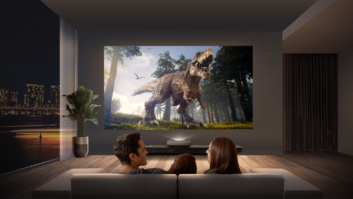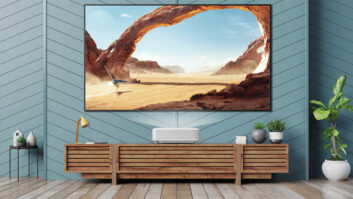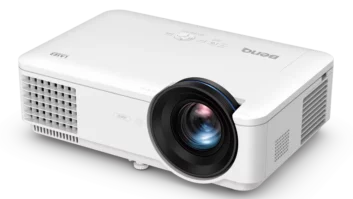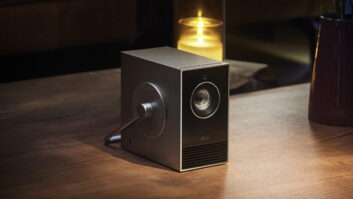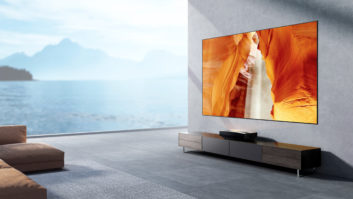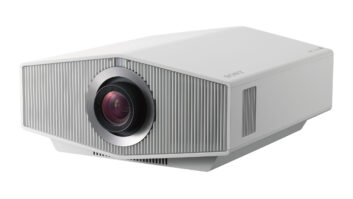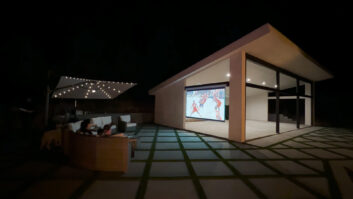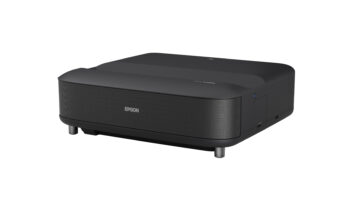Every once in a while a technology shows up that grabs my attention. This happened most recently with a new application of laser technology. It wasn’t some radical new technique for hair or tattoo removal, or cutting tools, either. In fact, it was much closer to home. I am speaking, of course, of laser projection.
Now, what, you may ask, is laser projection? Do I mean that laser light shows are being re-purposed for the sake of displaying our favorite action heroes larger than life in 1080p? Actually, no. Laser projection refers to the practice of using red, green, and blue lasers as an alternative to light bulbs (lamps) as the light source for front- and rear-projection digital display devices like DLP, LCD, and LCoS. That’s a pretty awesome concept, huh?
The actual technology behind laser projection is pretty heavy stuff; so let’s leave that for engineers to discuss in white papers. What really matters to our business of custom integration are the cool benefits and advancements afforded by laser projection. Here’s a brief look at some of the improvements we could see.
Wider Color Gamut. Laser projection supports a color gamut that greatly exceeds what lamp-based light sources can provide. In some cases, we’re talking about a 200-percent increase over the number of colors available for NTSC (the analog television standard that we’ve lived with for the better part of 50 years).
Longer Lifespan. Laser light sources can last up to 20,000 hours at 100-percent light output! Compare that to only 2,000 to 5,000 hours for projection lamps, which, to add insult to injury, grow dimmer over that time. Think about how happy your clients would be if they didn’t have to spend $500 on a new lamp every year or so.
More Accurate Grayscale/Colorimetry. If you’ve had any experience calibrating lamp projectors in addition to installing them, you know that factory grayscales can be all over the barn. Often they are neither flat nor close to the D65 reference point. Laser projectors, on the other hand, can be adjusted at the factory for much more accurate grayscales, so there is not nearly as much work to do in the field. If you currently farm out calibration, or don’t do it at all, you might actually have time to do it yourself and collect the extra bit of revenue.
More Consistent Grayscale/Colorimetry Over Time.Projection lamps change grayscale as they age, necessitating frequent tweaks to the grayscale if you want it to stay accurate. Laser light sources, on the other hand, demonstrate no change in grayscale over time.
Simplified Light Engine Design. The light path for laser projection is much less complex than lamp projection, because there is less need for light shaping and focusing. This leads to clearer images, because there are fewer lenses, etc. The cost per lumen for a laser projector should, therefore, be lower than a lamp projector.
Scalable Light Output. Laser light sources can be grouped together to scale a projector’s light output to a specific application. If you need more light, add a laser module. If you have too much, take one away. It would be somewhat comparable to having different versions of the same lamp-based projector where the only difference was the wattage of the lamp.
Lower Heat Dissipation. Laser light engines don’t produce nearly as much heat as lamps. This means that laser projectors could be smaller and quieter than their lamp-based counterparts. The need for noisy cooling fans, etc., is greatly reduced.
Remote Light Source. Laser projection opens up all sorts of unique installation opportunities, because the light source can actually be located remotely from the projector. As long as you can run RGB fiber optic lines between the “laser illuminator” and the “projector,” you’re good to go. In other words, you could have a very small, lightweight, fan-less projection unit mounted to the ceiling of a theater, while the laser light source is located off in a cooled equipment room with the rest of the gear. You don’t need a projection room or a hush box around the projector, and the challenge of building a sound-isolated, high-performance optical projection port is a thing of the past. That might not be good news for my company, which designs such complicated devices, but you should be dancing in the streets.
Ready for a Test Drive. So how close are we to seeing some laser projection displays? A few manufacturers have started to work with the Necsel laser technology (www.necsel.com) developed by Novalux (www.novalux.com) in Silicon Valley. Right now, they are mainly making one-piece rear-projection DLP, LCD, and LCoS products. However, I recently saw a great-looking demonstration of a modified two-piece, 3-chip DLP projection system. There are still a few bugs to work out, such as the scintillation issues that are inherent to very tightly correlated laser light. The demo I saw used a vibration scheme on the screen to “dither” out the effect. A similar system would be best implemented within the projector.
As with any new technology these days, keep an eye out for additional manufacturers to adopt Necsel or some similar laser light source. Laser projection will greatly simplify your design and installation issues, give you better long-term system stability and reliability, and provide your customers more picture for their money.
Chase Walton ([email protected]) contributed to this article.
